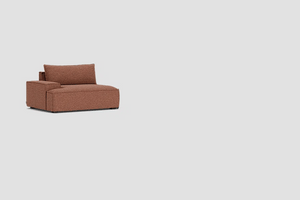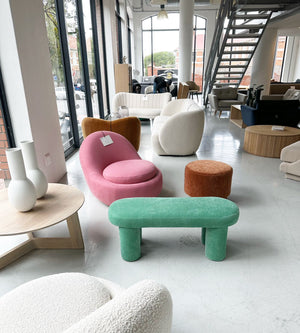
Can You Sleep on a Daybed All the Time? Essential Tips and Considerations
When it comes to versatile furniture, daybeds often top the list. But the question many of us ponder is whether we can sleep on a daybed all the time. Daybeds offer a unique blend of seating and sleeping space, making them a popular choice for small homes and guest rooms.
However, the comfort and support they provide for nightly use are crucial factors to consider. We'll explore the pros and cons of using a daybed as your primary sleeping arrangement and help you decide if it's a suitable option for your needs.
What Is A Daybed?
A daybed functions both as a sofa and a bed. This dual-purpose furniture piece typically includes a three-sided frame resembling a deep bench with a mattress. It's designed to provide comfortable seating during the day and a convenient sleeping space at night.
The design of daybeds makes them ideal for various settings. Small homes, guest rooms, and studios often feature daybeds due to their space-saving qualities. They effortlessly blend into any room, offering both style and functionality without compromising on either.
Daybeds come in various sizes and styles. Some daybeds include a trundle, an additional mattress stored beneath the main one, ideal for accommodating extra guests. Traditional daybeds often have an accent or decorative frames crafted from materials like wood or metal, contributing to their aesthetic versatility.
When selecting a daybed, the mattress plays a crucial role in comfort. High-quality mattresses can ensure the daybed remains comfortable for regular use, whether for sitting or sleeping. Using a supportive mattress helps mitigate potential discomfort and improve the overall utility of the daybed.
Daybed Vs Traditional Bed
Both daybeds and traditional beds serve distinct purposes but have their unique merits. Choosing between them depends on your needs and lifestyle. Here, we'll delve into key differences to help you make an informed decision.
Differences In Design
Daybeds typically serve dual purposes: providing a seating area during the day and converting into a bed at night. They often come with a trundle, increasing sleeping capacity without occupying extra space. Designs range from classic wooden frames to modern metal structures, fitting various decor styles.
Traditional beds, on the other hand, focus solely on providing a comfortable sleeping space. These beds come in a vast array of designs—from minimalist platform frames to luxurious canopy beds—offering more options in terms of aesthetics and functionality solely for sleeping.
Differences In Comfort
Comfort can vary significantly between daybeds and traditional beds. Daybeds often have firmer mattresses designed to handle the dual function of seating and sleeping. These can be less comfortable for prolonged use compared to traditional beds, which usually feature mattresses specifically designed for sleeping comfort.
While traditional beds can offer superior sleep quality with a wide range of mattress options, daybeds are ideal for small spaces and occasional guests. It's crucial to consider whether the primary use of the bed is for sitting during the day or sleeping at night.
Pros Of Sleeping On A Daybed Every Night
Daybeds, with their dual functionality and compact design, have become a popular choice for many. But can you sleep on one every night? Let's dive into the benefits.
Space-Saving Benefits
Daybeds especially shine in small spaces. They combine the features of a bed and sofa, providing a seamless transition from day to night. This dual-purpose nature can free up significant floor space, making them ideal for studio apartments and guest rooms. By opting for a daybed, we can maximise our living area, maintaining a tidy and efficient environment.
Versatility Of Use
Daybeds aren't just for sleeping. During the day, they function as comfortable seating, perfect for lounging, reading, or entertaining. At night, they transform seamlessly into a cosy bed. This adaptability makes them a fantastic addition to any room. Whether placed in a home office, living room, or spare bedroom, daybeds can cater to various needs, adding both functionality and style.
Budget-Friendly Option
Choosing a daybed can also be a smart financial decision. Given their multifunctionality, we’re saving money by not having to buy separate pieces for lounging and sleeping. High-quality daybeds come at various price points, making it easier to find one that fits our budget. Plus, with fewer furniture pieces, we might find ourselves spending less overall on home décor.
Cons Of Sleeping On A Daybed All The Time
Sleeping on a daybed night after night can be less than ideal for some individuals. Let's delve into the potential downsides.
Potential Comfort Issues
Daybeds typically have a smaller surface area than standard beds, which can reduce comfort levels over time. Many daybeds, even with high-quality mattresses, may not provide the same support as traditional beds. For those with specific sleep preferences or ailments, such as back pain, the firmness or size of the daybed could exacerbate their conditions.
Longevity Concerns
Daybeds, particularly less sturdy models, might not withstand daily use well. Over time, the frame and mattress can wear out faster due to more frequent use, potentially leading to higher replacement costs. Even high-end daybeds can show wear and tear if used as a primary sleeping solution, impacting not just comfort but also the overall aesthetic of the room.
Tips For Making A Daybed More Comfortable
Daybeds are versatile and functional, but to ensure a comfortable sleep all the time, some adjustments can be beneficial. Here are several effective tips.
Choosing The Right Mattress
Selecting an appropriate mattress affects the comfort of a daybed significantly. Opt for a mattress with medium firmness, which satisfies a balance between softness and support. Foam mattresses or those with pocket springs provide excellent support and comfort. It's crucial to measure the daybed frame accurately to ensure the mattress fits perfectly, avoiding gaps or overhangs. Custom-made mattresses can be a viable option if standard sizes do not suffice.
Adding Quality Bedding And Cushions
Enhancing a daybed's comfort level involves choosing proper bedding and cushions. High-thread-count cotton sheets feel smooth and breathable. Layer the daybed with a warm, supportive duvet and consider using blankets made of wool or fleece for extra warmth. Decorative cushions and bolster pillows add both comfort and style. Position cushions strategically to offer additional lumbar support if using the daybed as a sofa during the day.
Implementing these tips ensures that a daybed remains comfortable and functional for daily use.
Conclusion
Daybeds offer a versatile solution for both seating and sleeping needs. By carefully selecting a high-quality mattress and enhancing comfort with proper bedding and cushions we can make a daybed suitable for nightly use. It's essential to consider both comfort and longevity when deciding if a daybed fits our lifestyle. With the right adjustments and care a daybed can be a practical and comfortable alternative to traditional beds.
Frequently Asked Questions
What are the main benefits of a daybed?
Daybeds offer dual functionality—they can be used as a sofa during the day and a bed at night. This makes them perfect for small spaces and guest rooms, maximising utility without compromising comfort.
How can I make my daybed more comfortable for sleeping?
To enhance comfort, choose a medium-firm mattress that fits the frame well. Add quality bedding and cushions to improve both comfort and style. These adjustments help address any discomfort from sleeping on a daybed regularly.
Is it possible to sleep on a daybed every night?
Yes, it is possible. By selecting the right mattress and bedding, you can make a daybed comfortable for nightly use. Proper care and occasional maintenance will also help prolong its lifespan.
What type of mattress is best for a daybed?
A medium-firm mattress is generally recommended for daybeds. It provides the right balance of support and comfort. Make sure the mattress fits the daybed frame properly to avoid any discomfort.
How do daybeds compare to traditional beds in terms of comfort and usability?
Daybeds are versatile and space-efficient, making them ideal for smaller spaces and multifunctional rooms. However, traditional beds may offer better long-term comfort for regular nightly use. Your choice should depend on your individual needs and lifestyle.
How can I prolong the lifespan of my daybed?
Regular maintenance, such as rotating the mattress and checking the frame's stability, can help prolong the lifespan of your daybed. Enhancing its comfort with quality bedding and cushions also contributes to its longevity.


